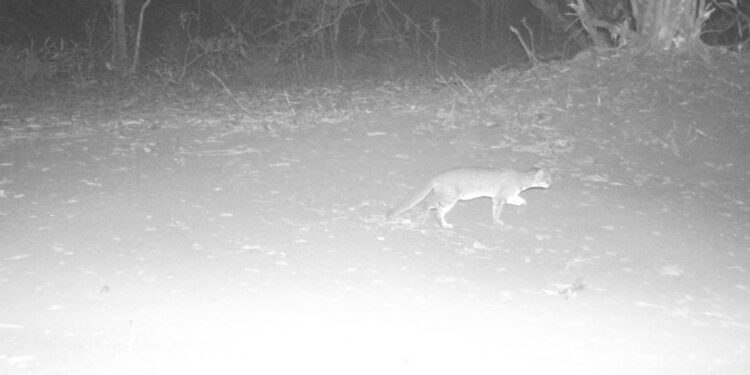Nestled in the heart of the Deccan Plateau, Kawal Tiger Reserve is more than just a wildlife sanctuary—it is a thriving biodiversity hotspot that plays a crucial role in India’s conservation efforts.
With its dense forests, diverse fauna, and picturesque landscapes, Kawal serves as an essential habitat for apex predators like the tiger and the world’s smallest wild cat, the Rusty-Spotted Cat (Prionailurus rubiginosus).
A Sanctuary for Rare and Majestic Wildlife
Declared a tiger reserve in 2012, Kawal spans 893 sq. km and features both core and buffer zones, ensuring the protection of various species. The reserve boasts a mix of dry deciduous forests, seasonal rivers, and rich biodiversity, making it a paradise for nature lovers and conservationists alike.
While Kawal is home to formidable predators like tigers, leopards, wild dogs, and sloth bears, its true gem is the elusive Rusty-Spotted Cat—the smallest wild feline in the world. Weighing merely 1 to 1.6 kg, this secretive hunter blends seamlessly into its surroundings, making sightings rare but significant.
Conservation Efforts and Camera Trap Success
The diligent monitoring efforts of forest officials and the deployment of camera traps have led to successful documentation of the Rusty-Spotted Cat. Each recorded sighting strengthens conservation strategies while raising awareness about the need to protect lesser-known species.
The Telangana Forest Department, under the leadership of Shri. Shantaram IFS, Chief Conservator of Forests, Mancherial and Field Director, Kawal Tiger Reserve, has made remarkable contributions to the study and preservation of Kawal’s wildlife. Their commitment to ecological protection is evident in the maintenance of camera traps, biodiversity surveys, and habitat conservation projects.
Birdwatcher’s Paradise: A Haven for Avian Life
Kawal isn’t just about mammals; it is a key birding destination, attracting enthusiasts from far and wide. The reserve is home to rare and migratory birds, including the crested serpent eagle, hornbills, owls, and the forest owlet. During migration periods, the skies come alive with diverse species, turning Kawal into a spectacular natural exhibit.
Sustainable Ecotourism and Community Engagement
Kawal Tiger Reserve exemplifies ecotourism done right. With maintained trails, eco-friendly accommodations, and knowledgeable guides, visitors can experience the thrill of nature responsibly. The reserve also conducts educational workshops, nurturing conservation awareness among students while involving local communities in preservation efforts.
Additionally, the anti-plastic initiatives led by the forest department are making a tangible impact. Clean-up drives and CSR programs reinforce the idea that conservation is a shared responsibility—one that requires public participation alongside official efforts.
Preserving Kawal’s Legacy for Future Generations
With ongoing conservation programs, technological advancements in wildlife monitoring, and community-driven sustainability projects, Kawal Tiger Reserve stands tall as a symbol of India’s commitment to biodiversity conservation.
Let’s honour the dedicated forest officials, researchers, and local communities who safeguard this magnificent habitat. Together, we can ensure Kawal remains a thriving sanctuary for wildlife and a beacon of conservation excellence.

Contributed by K. Shiva Kumar, a professional Wildlife Storyteller (M.A in Journalism & Mass Communication, an alumnus of Central University Of Odisha, Koraput) from Hyderabad, Telangana.
K. Shiva is passionate about wildlife conservation. Through his work, he hopes to inspire greater appreciation for the wildlife that shares our planet and encourages conservation action.























